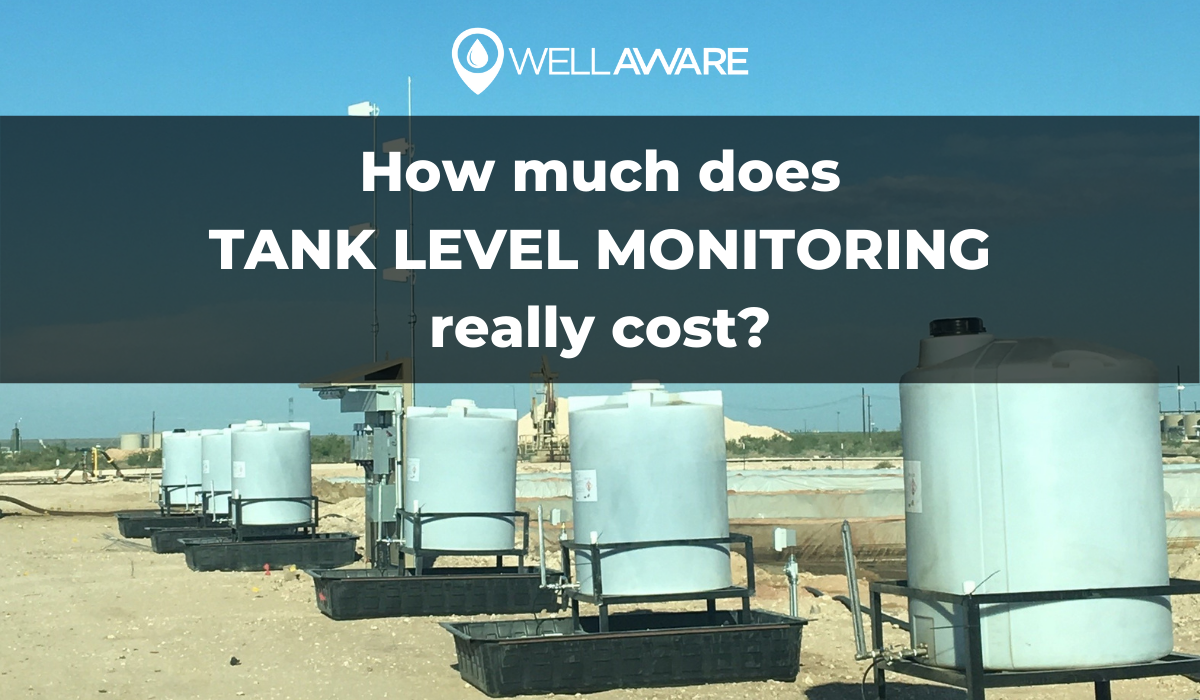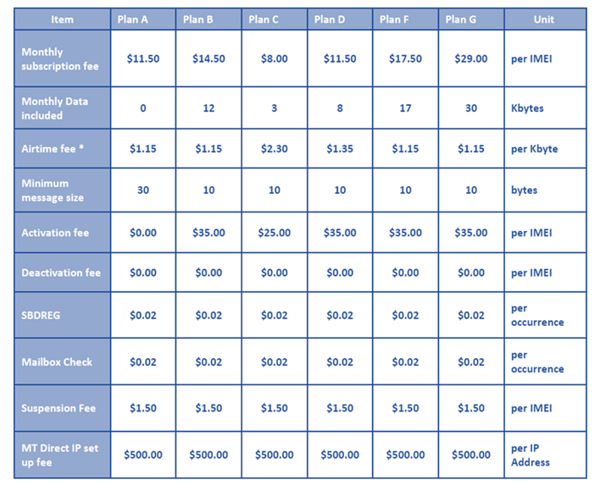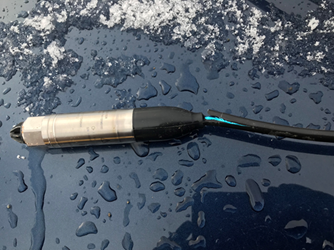
News, Insights, and more on Industrial IoT
 The cost of a tank level monitoring system is often top of mind for many operations leaders. There are many, many layers to tank level monitoring, and all of them contribute to tank level monitoring prices.
The cost of a tank level monitoring system is often top of mind for many operations leaders. There are many, many layers to tank level monitoring, and all of them contribute to tank level monitoring prices.
First, you need to pick the right type of sensor. Then, you have to figure out all things connectivity -- from networking and power to OTA configuration and security. Once the pieces are in place, you can start to address common industrial challenges, like inventory stock outs, environmental contamination, and custody transfer errors, and join the many other businesses tackling problems across these five industries.
But, one big question remains: how much does tank level monitoring cost?
After all, you want to see a good return on investment (ROI) if you plan to spend the money and take the time to set up a wireless tank level monitoring system. And while there is, of course, no one-size-fits-all tank level monitoring price, we can draw on our years of experience helping industrial companies monitor their tanks to help you evaluate and understand your potential tank level system costs based on your goals.
This post will address the key factors involved in calculating how much a tank monitoring system costs so that you’ll have somewhere to start. In particular, we’ll cover:
We’ve got a lot to discuss, so let’s dive in.
We’ve covered this topic in detail in another blog post (What’s the Best Tank Level Sensor?), so we’ll just touch on the most important points.
Tank level monitoring hardware costs vary significantly. You can find some sensors in the $100 to $200 range. Others will cost you $2,500 or more. The three primary variables that determine where sensors fall on the cost spectrum are materials of construction, environmental rating, and required certifications.
A sensor’s material makeup has to be compatible with the local environment and target fluids. If you want to monitor non-critical water tanks, a PVC tank level sensor housing should suffice. . However, if you need to track highly corrosive fluids in hazardous environments, you may need stainless steel, ceramic, or even titanium housing. These higher-grade materials will increase your costs big time.
There’s also the simple question of materials quantity. Tanks vary in height, and for most sensors, taller tanks mean more materials (with the exception of sensors like ultrasonic or radar). More sensor length simply compounds the cost of higher quality materials.
Depending on your environment, you may need different ratings on your transmitter enclosures. Sensors used in outdoor environments, for example, must be able to withstand dust, rain, and extreme temperatures. In these cases, you’ll need ingress protection (IP) and/or NEMA ratings that stand up to your environment.. You may also have to consider UV-resistant or flame-resistant housing materials, as well as temperature compensation.
In addition, you may need sensors with certain certifications, depending on where you operate. For instance, if you plan to use sensors in areas where flammable gases, vapors, or dust exist, you’ll have to shop for devices certified for those environments. You’ll often see tank level monitoring manufacturers charge extra for sensors with certifications because it costs them more to obtain the necessary approvals.
The chart below provides a helpful reference for how materials, ratings, and certifications can affect pricing for hydrostatic level sensors, for example.
| Base Price: ~$250* | Factor | Basic | Medium Upgrade | Price Increase | Premium Upgrade | Price Increase |
| Sensor Construction | Sensor Material | 316L Stainless Steel | PVDF | +$70 | Titanium | +$500 |
| Cable Material | Polyurethane | Hytrel | +$45 | PTFE | +$85 | |
| Cable Length | 3 feet | 15 feet | +$30 | 80 feet | +$185 | |
| Environmental Rating | IP Rating | None | IP68 | +$95 | N/A | N/A |
| Temperature Compensation | -10°C to 50°C | -40°C to 125°C | +$65 | N/A | N/A | |
| Certifications | Hazardous | None | IECEx/ATEX IS Group I | +$30 | IECEx/ATEX Group IIC & I | +$60 |
| Accuracy | +/- 0.2% | +/- 0.1% | +$80 | +/- 0.04% | +$195 | |
| Calibration | Zero/span | Room temp linear | +$115 | Full thermal | +$230 |
*prices are for submersible hydrostatic sensor per Instrumart.com at the time of publishing
When planning to implement tank level monitoring, many people forget to factor the cost of installation into their initial estimates. Again, your cost to install will vary widely depending on your application. Read up to get a feel for how much you should expect to spend to install your tank level monitor.
Some tank level monitoring sensors are simple enough that you can install them yourself. In safe environments with simple sensors, installation costs might be $0 plus a little sweat equity. Companies only have to give employees the devices for installation and direct them to the right assets.
However, once you start to move into industrial environments, the stakes get higher. You’ll likely want to hire professionals with extensive experience. In general, professionals are:
Professional tank level monitoring installers typically cost between $50-200/hour/technician depending on the region and their level of expertise. Some firms will charge you travel expenses by the mile as well, especially if you work in a remote area. Expect to pay between $0.50-1.50/mile on this front.
On top of these installation cost buckets, there are also “consumables” - related installation materials to get sensors up and running. Consumables include items like cables, wires, brackets, and mounting hardware. Prices for consumables can range from a few bucks to thousands of dollars. The biggest cost variable here is whether your sensors are wired or wireless.
We’ve talked previously about the advantages of using wireless tank level sensors. To summarize that post, running cable is expensive. Not only does it take time (see per-hour labor costs above), but it also requires lots of material. For instance, running 100 feet of two-pair 16 gauge CLX will probably cost you around $500 when all is said and done.
Here's an example indicating that it could cost nearly $700 per tank, including time and consumables, for two hard-wired tank level sensors on the same location.
| Hours/Material | Qty | Rate | Total Cost |
| Gather Materials and Drive to location | 1.5 | ||
| Install push pole/antenna/coax and build/install solar panel | 1 | ||
| Mount battery box and install batteries | 1 | ||
| Run wire to battery and solar panel. | 1 | ||
| Dig ditch and run wire | 0.5 | ||
| Prep CLX and install CLX fittings | 0.5 | ||
| Install radio and terminate | 0.5 | ||
| Install two tank probes and program | 2.5 | ||
| Install tank wireless device and program | 1 | ||
| Verify comms and validate data | 1.5 | ||
| Total Hours | 11.75 | $85.00 | $935.00 |
| 1/ 2TMC fitting | 1 | $44.23 | $44.23 |
| 1/2" TMCX fitting | 1 | $99.00 | $99.00 |
| 2 pair 16 gage CLX | 15 | $3.13 | $46.95 |
| Solar Panel Wire | 10 | $2.00 | $20.00 |
| 1/2" GUAT | 1 | $80.00 | $80.00 |
| 4x1 reducing bushing for tank probes | 2 | $30.00 | $60.00 |
| 1/2' CGB | 3 | $3.50 | $10.50 |
| Tie Wraps | 35 | $0.75 | $26.25 |
| 1/2" close nipple | 1 | $0.80 | $0.80 |
| 1/2" myers hub | 2 | $11.59 | $23.18 |
| Total Cost for Double Tank | $1,345.66 | ||
Like other cost factors, the cost of transmitting tank level data varies based on application. If you are using existing networking infrastructure (e.g., facility WiFi, private 900 MHz, etc.), you’ll likely only spend money to add bandwidth, which might mean getting new hardware (routers, models, radios, and antennas) or upgrading with your internet service provider (ISP). It’s also possible you want need to make any upgrades at all, meaning your communication costs will be negligible.
If you use public infrastructure, like cellular or satellite, you’ll incur data costs. Fortunately, cellular is cheap. Expect to pay as little as $0.01/MB or less at high volumes. If you aren’t operating at scale yet, most tank level monitoring plans will cost you a few dollars per device for data.
Below is an example of a cellular data plan for IoT-based wireless tank sensor data costs:

If you have to go satellite, leave some breathing room in your budget. Satellite is much more expensive - sometimes as much as $1/KB. With this rate structure, a standard tank level monitoring sensor that sends three data points every hour will cost about $100/month. Take a look at some example satellite plans below to get an idea of how these data costs might be structured.

Obviously, go cellular if you can. But, if you have to go satellite, be precise in how much data you need and make sure you can achieve your ROI goals. One more thing to keep in mind is that some tank level monitoring vendors will bundle communications costs into their service fee. In these cases, you’ll want to know exactly how much data you are getting. Otherwise, you risk exceeding data caps and earning surprise upcharges on your monthly bill!
Software applications usually take on two forms in the tank monitoring world: Licensed Software Packages and Software-as-a-Service (SaaS) platforms.
Licensed Software Packages are most often used in legacy systems, like SCADA. If you go this route, your company might be able to negotiate a license fee. For example, if you are using SCADA, you are probably already paying for software that supports tank level monitoring. Adding the capability might not cost you any extra outside of the initial setup fee (which can be a big pain, by the way). If you do need to license SCADA, however, expect to pay tens or hundreds of thousands of dollars for a license.
SaaS for tank level monitoring is a different story. You typically won’t pay for a license. Instead, you’ll pay a monthly fee to access certain software on a per-unit basis. The amount you pay per device will vary depending on your provider. With most SaaS tank level monitoring vendors, you’ll usually pay for the sensor separately, then the data and software access is rolled into a monthly fee. We’ve seen anything from a couple bucks a month to over $100 per month per tank just for software.
Something to look out for in your software provider is how they treat add-ons. Some SaaS vendors will nickel and dime you for anything outside of the standard agreement: need more data? Here’s an upcharge. Custom development? Upcharge. Setup help? Upcharge.
Make sure you understand all of this before making a final decision.
Here’s where things get fun. If installation is the quiet child of tank level monitoring budgets, then ongoing maintenance is the long lost cousin. Rarely do people consider the costs of ongoing tank level maintenance and how it can impact their ROI. Leaders tend to focus more on the upfront costs associated with putting a new solution in play. And in our experience, the less money companies spend upfront, the MORE they spend down the road on ongoing maintenance.
There are several maintenance items you will need to consider, like sensor cleaning or wireless troubleshooting. But in our experience, there are two maintenance nightmare scenarios that you want to avoid: sensor failures and network sunsetting.
Sensor failures are common in hazardous areas or when devices sit in corrosive liquids day after day. Whenever sensors fail, they need to be replaced, which is where manufacturer warranties come into play.
Many tank level monitoring sensors only come with 1-year warranties. So, if you have to replace your expensive sensor outside that short warranty period, you could end up spending hundreds just to keep working devices in the field. And this isn’t hyperbole. We’ve seen tank level monitors installed in chemical tanks in West Texas that fail after 6 months of use, requiring operators to spend money on new sensors (and the cost to install them).
Take it from us: Don’t be the person who gets caught with a sensor failure problem. Do your homework, understand what is covered under warranty, and factor occasional sensor replacements into your total cost of ownership for a tank level monitoring system.

Network sunsetting has come up recently, as we phase out 2G and 3G networks, the technologies that supported early Internet of Things (IoT) tank level monitors. Think ahead to a few years from now - what will you do when 4G gets sunsetted? Buy all new hardware? And then install it again?
If your connectivity becomes obsolete in the future, you’ll be back to square one on cost, needing to replace everything except perhaps the sensors.
You have to consider this with any vendor you evaluate. Make sure your tank level monitoring provider has a plan to avoid downstream costs related to network sunsetting.
Let’s bring it all back together. You came here wanting to learn how much tank level monitoring will cost your business. The answer is it depends.
Our hope is that this article has helped you understand the critical factors involved in projecting costs. If you’re tackling the calculus alone, you need to account for hardware, installation, communication, software, and ongoing maintenance expenses to get the full picture. On the other hand, if you go with a company like WellAware, you can implement an accurate, reliable tank level monitoring solution under one comprehensive subscription plan.
We give you everything - hardware, connectivity, software, upgrades, AND a lifetime warranty - for a clean monthly fee. Plus, you don’t have to worry about ongoing maintenance or replacing equipment that fails. We’ve got you covered.
Click here to learn more about what we do and why it’s so valuable for industrial companies.
Like what you're reading? Sign up for updates!
Have a Question?